Description
This book represents a nuanced perspective on zooarchaeological studies. Although primarily conceived as proceedings from the 9th Postgraduate ZooArchaeology (PZAF) Forum held online in 2021, it gradually become something more – a “magnifying glass” that enabled us to take a closer look at research conducted by early career researchers in zooarchaeology. In times of growing insecurity in both academia and the field of archaeology itself, it puts the spotlight on a series of case studies from emerging scholars across Europe, most of which derived from their Master’s and PhD theses. The topics covered in this volume include a wide range of traditional and non-traditional zooarchaeological analysis, including taphonomy, zooarchaeology of ritual, isotope analysis, radiocarbon dating, and animal iconographic representations.
AUTHOR
Dimitrije Marković is a zooarchaeologist at the Laboratory for Bioarchaeology in Belgrade (Serbia). His research focuses on questions of Roman army diet and supply in what is now Serbia.
Teodora Mladenović is a zooarchaeologist from the Laboratory for Bioarchaeology in Belgrade (Serbia). Her research focuses on the human-animal relationships during the medieval period in the Central Balkans and adjacent areas.
List of contributors: Esteban Álvarez-Fernández, Kristina Bondžuliƈ, Rosana Cerezo-Fernández, Lídia Colominas, Marián Cueto, Dimitrije Marković, Chiara Messana, Roberto Miccichè, Mladen Mladenović, Teodora Mladenović, Rocío Pazos, Sofija Petković, Enriqueta Pons, Vito Giuseppe Prillo, Milan Savić, Margarita Sánchez-Simón, Claudia Speciale, Jesus Tapia, Goran Tomac, Carlos Tornero, Elena Vasileva, Diyana Vladova, Mirko Vranić.
REVIEW
‘A fascinating look into a variety of sites that sit outside of my own regional expertise, as well as providing interesting insight into recent strands of zooarchaeological research being undertaken by the next generation of academics. That such an edited volume covers a mixture of methodologies, regions, and time periods is also a testament to its unique nature in comparison to other publications that may cover some elements of the same topics.’ Dr Alex Fitzpatrick, Science Museum











